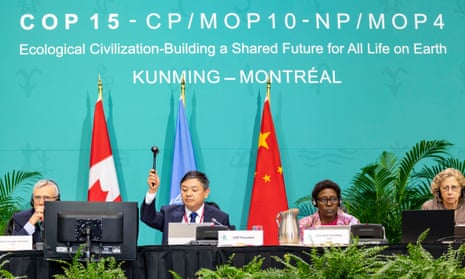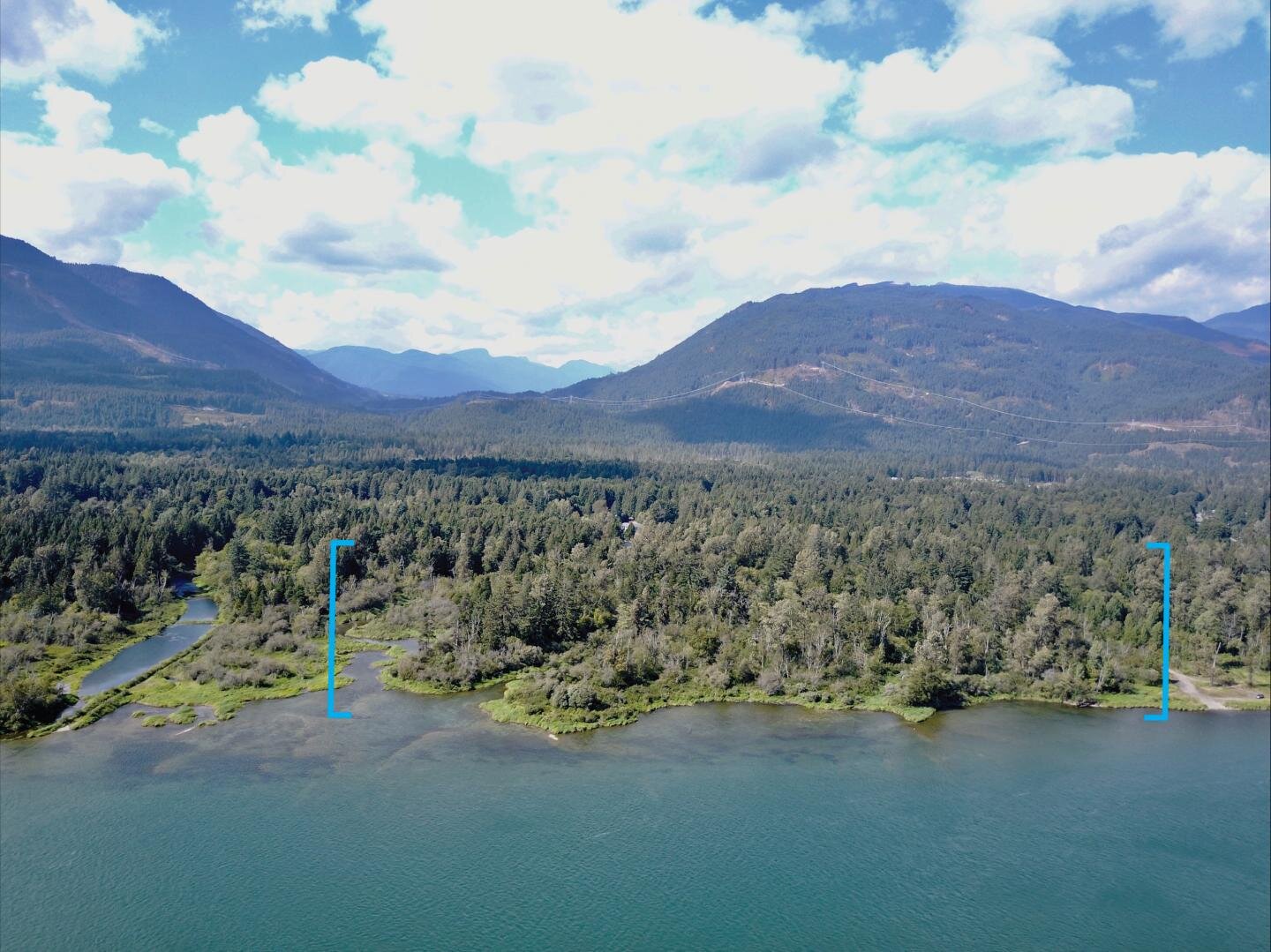Indigenous communities protect more than 80% of the world’s remaining biodiversity.

By Camille May
February 14, 2023
As stewards of the earth, the 476 million Indigenous Peoples living across more than 90 countries have an essential role to play in our world’s future. Generations of traditional knowledge, cultural responsibility, and sustainable land management have proven how critical Indigenous voices are to both protecting our planet and solving the global food crisis.
Yet for decades, Indigenous communities and activists have called for urgent action on climate change and food security — calls that have largely gone ignored. As protectors of more than 80% of the world’s remaining biodiversity, their leadership and consultation hold the key to a resilient and sustainable future.
And two things are clear — Indigenous voices must be heard, and their recommendations must be taken seriously.
That’s why, in 2011, the Indigenous Peoples Forum (IPFI) was launched by the UN agency, the International Fund for Agricultural Development (IFAD), to ensure an in-person, open dialogue existed between communities at the heart of climate change and development agencies on the front lines. The 2023 Indigenous Peoples Forum runs from Feb. 9-13, and is bringing together Indigenous leaders to discuss food security, climate action, traditional knowledge, and more.
Indigenous communities come face to face with climate change every day — one of the reasons why it’s important that they have the opportunity to shape the future of climate action and inform adaptation measures beyond their communities.
Despite contributing the least to climate emissions, Indigenous Peoples are among the communities suffering most from its impacts, which threaten food security, livelihoods, and millennia of culture. Here are five key reasons it’s essential to make sure Indigenous voices are present at every climate discussion.
1. Custodians of Knowledge
From unusual weather patterns to land management and sustenance farming, Indigenous Peoples have spent millennia accumulating knowledge about their environment. This place-based knowledge can help us predict and adapt to accelerated climate change on a global scale, because protecting and conserving ecosystems and nature is about preserving the diversity of human cultures.
Just 6% of the global population is Indigenous. Still, they speak more than 4,000 languages, including unique words and concepts to describe how they interact with the natural environment that demonstrate a respectful, symbiotic relationship.
Triệu Thị Tàn, a traditional healer from the Dao-Que Lam community who lives in the village of Phien Phang in Northern Vietnam, used traditional knowledge to help save her daughter’s life during pregnancy using a recipe passed on by her grandmother.
Like generations before her, she collects and cultivates medicinal plants in the complex forest-based ecosystems near her home, using ancestral knowledge to grow medical plants that only survive where their original habitats are intact.
2. Life-Saving Food Systems
The climate crisis is driving up rates of hunger worldwide. Today, the realities of globalized networks and years of compounding crises, like war and COVID-19, have uncovered the weaknesses in the global food system. From 2019 to 2022 alone, the number of malnourished people grew by as many as 150 million.
One of the best solutions is to build resilient food systems at the community level, with Indigenous knowledge serving as both beneficiaries and drivers of the answers we need to curb hunger.
The food systems of Indigenous Peoples’ have traditionally provided healthy diets anchored in sustainable livelihood practices. One of the main goals of the International Fund for Agricultural Development (IFAD) has always been to place small-scale farmers and other rural people at the heart of work to transform food systems, fostering action-orientated and sustainable solutions for food systems around the world.
This includes IFAD’s investment in Slow Foods — a program that’s dedicated to enhancing “local value chains for traditional foods” and which operates across 86 countries, helping Indigenous farmers sustain traditional crops and farming practices while protecting biodiversity and species at risk of extinction. Farmers are then encouraged to scale production to sell on the national commercial market, like cities and wholesale producers.
Smallholder farmers, who are already facing drought and extreme weather events, will continue to face the biggest future impacts of climate change. Programs like Slow Foods help preserve generational farming that could inform sustainability agriculture for the future, promote nutrition security worldwide, and generate income at the community level.
3. Protecting Biodiversity
Biological diversity, or biodiversity for short, is the variety of all living things, as well as how these species interact with each other. These interactions can either lead to species extinction or the creation of new ones, a natural process that exists in harmony with the sustainable practices championed by Indigenous communities.
Of the world’s remaining biodiversity, a massive 80% is located in the lands of Indigenous Peoples, who use sustainable farming methods and land management practices that help protect this biodiversity. Preserving biodiversity and reducing the greenhouse gas emissions across the world is crucial to tackling the climate crisis.
Centuries of deforestation, the expansion of agricultural land, the hunting of wildlife, as well as the more recent additions of fossil fuels, and the impacts of climate change have put Indigenous communities and our planet at risk.
That’s why this year’s Indigenous Peoples Forum is convening under the theme “Indigenous Peoples’ climate leadership: community-based solutions to enhance resilience and biodiversity” in support of Indigenous Peoples and their role in protecting diversity, “one harvest at a time.“
In the Peruvian Amazon, employment opportunities in gas exploration have drawn many Indigenous communities to jobs in the field. But when strict COVID-19 laws in 2020 forced mining work sites to close, many Indigenous families returned to farming on their traditional lands as a means of survival, using knowledge and conservation-based agricultural practices that protected their livelihoods and the environment.
4. Safeguarding Conservation and Wildlife
While the exact amount isn’t known, it’s estimated that 50-65% of the world’s land is held by Indigenous Peoples and other communities, serving up to 2.5 billion Indigenous and non-Indigenous people who depend on that land for their livelihoods and well-being.
Almost two-thirds of that land is considered “essentially natural,” — an internationally recognized legal term to describe how Indigenous communities live in harmony with nature and the essential role they play in its conservation. In 2022, this was recognized at the UN Biodiversity Conference (COP15) in Canada when 190 countries signed onto the “30 x 30′ Agenda” calling for the protection of 30% of the world’s land and sea biodiversity while recognizing the role of Indigenous communities play as “stewards of nature.”
As one example, the Indigenous community of the Manobo people in the Philippines has protected their homeland, Pangasinan Island, through cultivation and land care practices for centuries, writes Vox. Centuries of “intuitive” cultivation have contributed to an island abundant in wildlife, allocating specific hunting seasons and dedicated areas for farming.
5. Climate Action of the Future
In many regions of the world, Indigenous communities are our last line of defense against climate change. Collectively they manage more than 24% of the world’s carbon stored in tropical forests and biomass, keeping heat trapping carbon dioxide out of the atmosphere. In the Amazon rainforest alone, home to more that 400 Indigenous tribes, almost 200 metric gigatons of carbon dioxide are stored on protected areas at risk from deforestation and commercial agriculture.
Within decades, millions of animals and plants will be at risk of extinction due to a decline in biodiversity worldwide at rates never witnessed in human history. Our climate is changing, and its effects are felt in all aspects of life, including food security, gender equality, political stability, and peace. Indigenous Peoples hold the key to developing future solutions, thanks in part to open forums like the The Indigenous Peoples’ Forum at IFAD, which draw on the wealth of knowledge, wisdom, and leadership their communities provide.
That’s because Indigenous Peoples are responding to climate change right now, through sustainable methods they have practiced for centuries.
Driven by the impacts of the war against Ukraine, the COVID-19 pandemic, and climate change, the world faces the largest food crisis in modern history. Indigenous knowledge will play an important role in preventing future food crises and solving the current one. Through community-based action and national and international advocacy, they’re generating practical adaptation initiatives, and solutions for our future.

